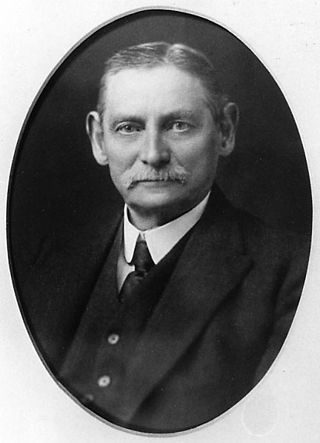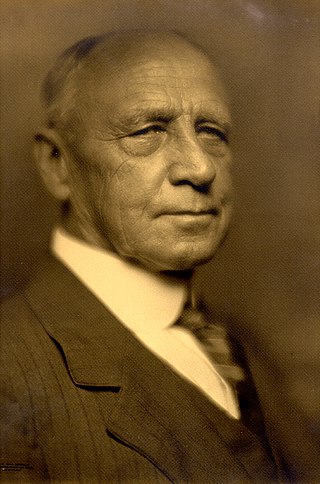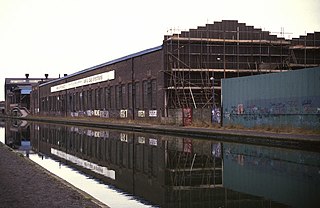
Baldwin Locomotive Works (BLW) was an American manufacturer of railway locomotives from 1825 to 1951. Originally located in Philadelphia, Pennsylvania, it moved to nearby Eddystone in the early 20th century. The company was for decades the world's largest producer of steam locomotives, but struggled to compete when demand switched to diesel locomotives. Baldwin produced the last of its 70,000-plus locomotives in 1951, before merging with the Lima-Hamilton Corporation on September 11, 1951, to form the Baldwin-Lima-Hamilton Corporation.
Steam power developed slowly over a period of several hundred years, progressing through expensive and fairly limited devices in the early 17th century, to useful pumps for mining in 1700, and then to Watt's improved steam engine designs in the late 18th century. It is these later designs, introduced just when the need for practical power was growing due to the Industrial Revolution, that truly made steam power commonplace.

The Hunslet Engine Company is a locomotive building company, founded in 1864 in Hunslet, England. It manufactured steam locomotives for over 100 years and currently manufactures diesel shunting locomotives. The company owns a substantial fleet of Industrial and depot shunting locomotives which are available for hire. The company is part of Ed Murray & Sons Ltd.
Metropolitan-Vickers, Metrovick, or Metrovicks, was a British heavy electrical engineering company of the early-to-mid 20th century formerly known as British Westinghouse. Highly diversified, it was particularly well known for its industrial electrical equipment such as generators, steam turbines, switchgear, transformers, electronics and railway traction equipment. Metrovick holds a place in history as the builders of the first commercial transistor computer, the Metrovick 950, and the first British axial-flow jet engine, the Metropolitan-Vickers F.2. Its factory in Trafford Park, Manchester, was for most of the 20th century one of the biggest and most important heavy engineering facilities in Britain and the world.

Ruston & Hornsby was an industrial equipment manufacturer in Lincoln, England founded in 1918. The company is best known as a manufacturer of narrow and standard gauge diesel locomotives and also of steam shovels. Other products included cars, steam locomotives and a range of internal combustion engines, and later gas turbines. It is now a subsidiary of Siemens.

Crossley, based in Manchester, United Kingdom, was a pioneering company in the production of internal combustion engines. Since 1988, it has been part of the Rolls-Royce Power Engineering group.

William Foster & Co Ltd was an agricultural machinery company based in Lincoln, Lincolnshire, England often called "Fosters of Lincoln." The company can be traced back to 1846, when William Foster purchased a flour mill in Lincoln. William Foster then proceeded to start small scale manufacturing of mill machinery and threshing machinery. The mill was converted to an iron foundry by 1856, thus becoming the original Wellington Foundry. By 1899 the works had moved to the Wellington foundry in New Boultham and the original works were then occupied by William Rainforth. During the First World War Fosters built some of the first tanks for the British Army.
B. Hick and Sons, subsequently Hick, Hargreaves & Co, was a British engineering company based at the Soho Ironworks in Bolton, England. Benjamin Hick, a partner in Rothwell, Hick and Rothwell, later Rothwell, Hick & Co., set up the company in partnership with two of his sons, John (1815–1894) and Benjamin Jr (1818–1845) in 1833.

Gwynnes Limited was a City of London England engineering business, iron founders and pump makers founded in 1849 to capitalise on the centrifugal pump invented by James Gwynne (1804–1850). In 1856 his eldest son, James Eglinton Anderson Gwynne (1832–1915), of Essex Street Wharves on the south side of The Strand was awarded a patent for the manufacture of carbon or charcoal powder. Their Strand site became part of the Victoria Embankment built between 1865 and 1867 and Gwynne profited from judicious investment in the reclaimed land. Their Crisp Road, Hammersmith Ironworks and works at Church Wharf, Chiswick, London, were established in 1867 to specialise in the manufacture of these centrifugal pumps and pumping engines This machinery was for use in practically all purposes where large or small quantities of liquid were required to be lifted and dealt with for low or high heads. A limited liability company was formed in May 1897 to own the business.

London Museum of Water & Steam is an independent museum founded in 1975 as the Kew Bridge Steam Museum. It was rebranded in early 2014 following a major investment project.

Charles Burrell & Sons were builders of steam traction engines, agricultural machinery, steam lorries and steam tram engines. The company were based in Thetford, Norfolk and operated from the St Nicholas works on Minstergate and St Nicholas Street, some of which survives today.

Queens Park is an electoral ward and area of Bedford, England, west of the town centre. The community was established in the 1890s and has been described as Bedford's first industrial suburb. Nowadays, it is diverse and multicultural with many specialist shops and businesses including international supermarkets and delis. Places of worship include an Anglican church, two mosques and one of the largest Sikh temples in the United Kingdom.

Matthew Henry Phineas Riall Sankey was an Irish engineer and captain in the Royal Engineers, known as the creator of the Sankey diagram.

Lewis H. Nash was an American engineer who invented the liquid-ring-vacuum pump, and was the holder of over a hundred United States patents for pumps, engines, and other equipment. He founded the Nash Engineering Company in 1905, and served as a member of the Connecticut House of Representatives.

Wilfrid Thomas Reid was an English aircraft designer and considered one of the pioneers of the Canadian aircraft industry.

Belliss and Morcom is a manufacturer and supplier of oil-free reciprocating compressors, technologies and services. Founded in 1852 in Birmingham, West Midlands, it is now a division of Ingersoll Rand based in Redditch, Worcestershire, England.

Worthington-Simpson was a British pump manufacturer. Many of their pumps were used in municipal waterworks in Great Britain.
SS City of Bedford was a British cargo steamship. She was launched in 1924 in Sunderland for Hall Line Ltd of Liverpool, a member of the Ellerman Lines group.

William Henry Allen was the founder of the company W. H. Allen, Sons & Company Ltd.
















